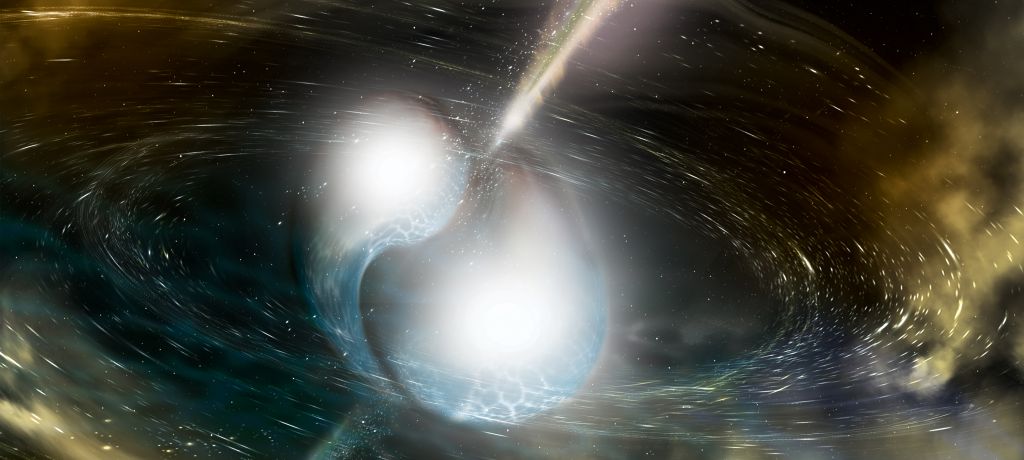Chris van den Broeck wordt bijzonder hoogleraar gravitatiegolven bij Van Swinderen Instituut

Dr. Chris van den Broeck is per 2 oktober door de Stichting Physica benoemd tot bijzonder hoogleraar in Theoretical Particle Physics and Cosmology, bij het Van Swinderen Institute for Particle Physics and Gravity van de Rijksuniversiteit Groningen (RUG). Zijn onderzoeksveld betreft gravitatiegolven. Van den Broeck is tevens verbonden aan het Nikhef - Nationaal instituut voor subatomaire fysica - en is lid van de LIGO-Virgo Collaboration dat bekend maakte de eerste zwaartekrachtgolven van samensmeltende neutronensterren te hebben opgevangen.
Bij het Nikhef is Van den Broeck werkgroepleider onderzoek en leidt hij de analysegroep voor zwaartekrachtsgolven. Hij is tevens lid van de LIGO-Virgo Collaboration en heeft actief meegewerkt aan de analyse van de eerste gravitatiegolfobservaties, waaraan onlangs de Nobelprijs voor de natuurkunde is uitgereikt.
Prijzen in fundamental physics
Van den Broeck (België, 1974) studeerde theoretische fysica in Leuven en promoveerde in 2005 aan de Pennsylvania State University (USA) onder begeleiding van Prof. Abhay Ashtekar op theoretisch onderzoek over zwarte gaten en neutronen sterren. Van 2005 tot 2009 vervulde hij een postdoc-positie bij de universiteit van Cardiff (UK) als lid van de LIGO Collaboration, waarna hij een vaste aanstelling bij het Nikhef verwierf en lid werd van de Virgo Collaboration. Hij is momenteel co-chair van de LIGO-Virgo working group on Testing General Relativity. Als lid van de LIGO-Virgo samenwerking deelde hij in de 2016 Special Breakthrough Prize in Fundamental Physics ($ 3 miljoen) en de 2016 Gruber Cosmology Prize. Laatstgenoemde prijs wordt uitgereikt door de Gruber Foundation van de Yale University (USA). Van den Broeck is tevens associate editor van het tijdschrift “General Relativity and Gravitation”.
Quantum Universe en neutronensterren
Als bijzonder hoogleraar bij het Van Swinderen Institute aan de RUG zal Van den Broeck zich gaan inzetten voor onderwijs over gravitatiegolven in de track Quantum Universe van de Master in Physics, voor het onderzoeken van het sterke veld regime van zwaartekracht, het bepalen van de interne structuur van neutronensterren aan de hand van zwaartekrachtsgolven, en voor de realisatie van de Einstein Telescope, die mogelijk in Limburg gebouwd zal gaan worden.
Contact
Prof.dr. Chris Van Den Broeck, bijzonder hoogleraar Van Swinderen Institute, Rijksuniversiteit Groningen
vdbroeck nikhef.nl– Tel 020 592 2053
Meer informatie LIGO-Virgo Collaboration
-
https://www.nikhef.nl/nieuws/ligo-en-virgo-detecteren-eerste-zwaartekrachtgolven-van-samensmeltende-neutronensterren/
Meer nieuws
-
06 januari 2026
AI-phasie: kunstmatige intelligentie helpt bij taalgebrek
-
06 januari 2026
Beter zicht op de werkpaarden van ons lichaam
